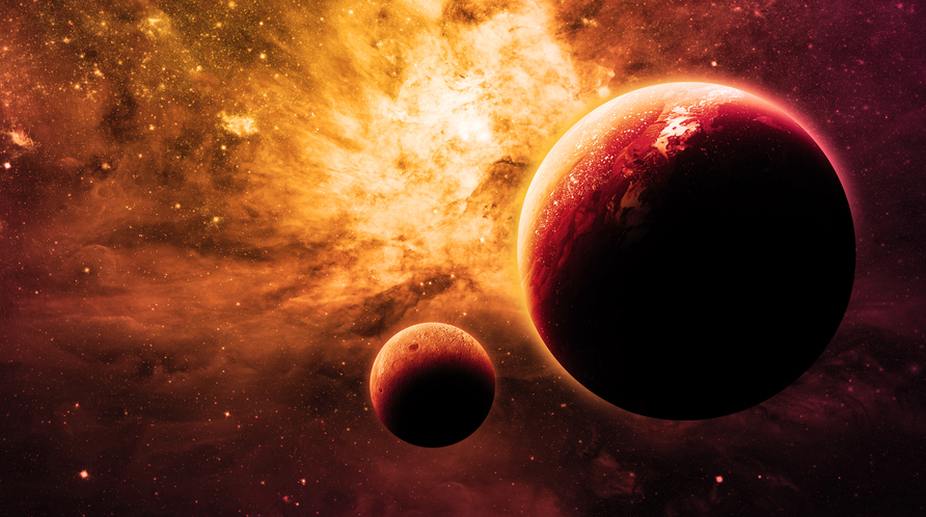Scientists have discovered the hottest known planet located 650 light years from Earth, which is warmer than most stars in the universe and sports a giant, glowing gas tail like a comet.
The Jupiter-like planet orbits a massive star KELT-9 every day and a half, researchers said.
With a day-side temperature peaking at 4,326 degree Celsius the newly discovered exoplanet, designated KELT-9b, is hotter than most stars and only 926 degree Celsius cooler than our Sun.
The ultraviolet radiation from the star it orbits is so brutal that the planet may be evaporating away under the intense glare, producing a glowing gas tail.
The gas giant 2.8 times more massive than Jupiter but only half as dense, because the extreme radiation from its host star has caused its atmosphere to puff up like a balloon.
Since it is tidally locked to its star – as the moon is to Earth – the day side of the planet is perpetually bombarded by stellar radiation and, as a result, it is so hot that molecules such as water, carbon dioxide and methane can not form there.
"It's a planet by any of the typical definitions based on mass, but its atmosphere is almost certainly unlike any other planet we've ever seen just because of the temperature of its day side," said Scott Gaudi, professor at The Ohio State University in the US and lead author of the study published in the journal Nature.
The reason the exoplanet is so hot is because the star it orbits is more than twice as large and nearly twice as hot as our Sun.
"KELT-9 radiates so much ultraviolet radiation that it may completely evaporate the planet. Or, if gas giant planets like KELT-9b possess solid rocky cores as some theories suggest, the planet may be boiled down to a barren rock, like Mercury," said Keivan Stassun, professor at Vanderbilt University in the US.
On the other hand, the planet's orbit is extremely close to the star so if the star begins to expand it will engulf it.
"KELT-9 will swell to become a red giant star in about a billion years," said Stassun.
"The long-term prospects for life, or real estate for that matter, on KELT-9b are not looking good," he said.
"We were pretty lucky to catch the planet while its orbit transits the face of the star," said Karen Collins, a post- doctoral fellow at Vanderbilt.
"Because of its extremely short period, near-polar orbit and the fact that its host star is oblate, rather than spherical, we calculate that orbital precession will carry the planet out of view in about 150 years, and it won't reappear for roughly three and a half millennia," said Collins.






